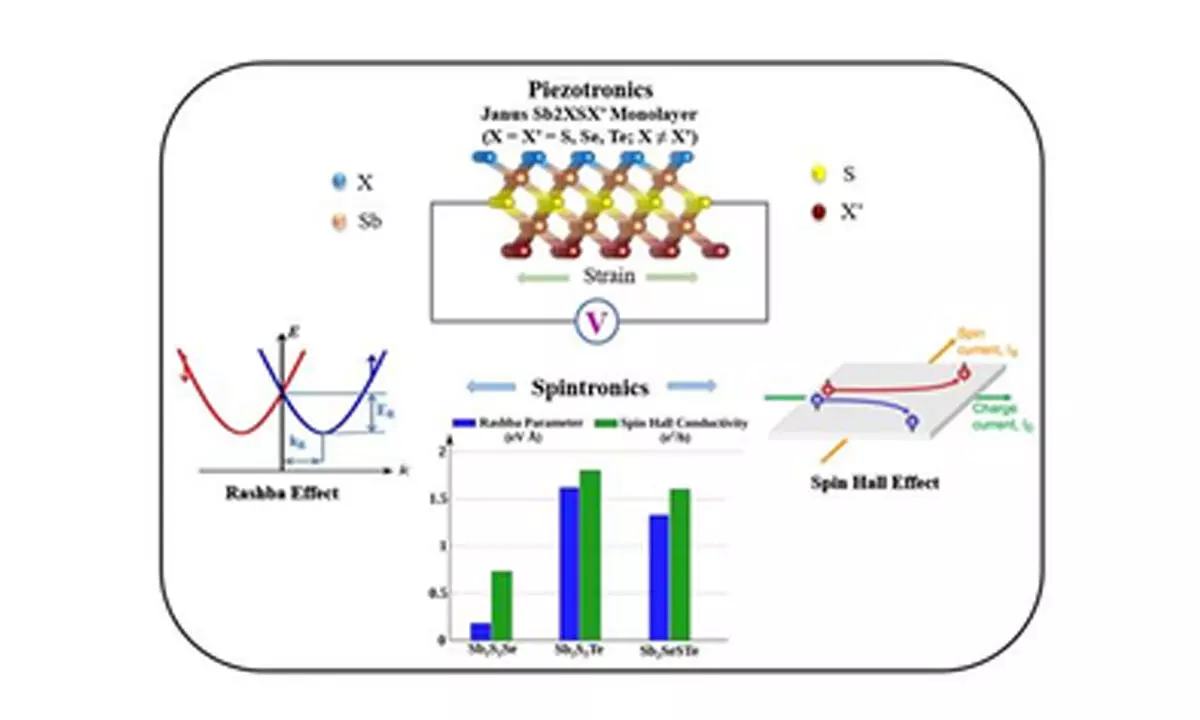Live
- National Birds Day: The vital role of birds in our ecosystem
- Aramghar-Zoo Park flyover to be thrown open to public today
- Punetha named in the list of 50 great persons
- CM to unveil ‘Swarna Kuppam Vision 2029’ in Kuppam today
- Uttarakhand Samaj Meets Governor Jishnu Dev Varma to Launch Temple Foundation Stone Event
- North Andhra was gravely neglected by YSRCP: Lokesh
- Follow time slot for smooth darshan: TTD to devotees
- Dr. Sadguru Dayanidhi Meets Governor Jishnu Dev Varma at Raj Bhavan, Hyderabad
- Ganja, mobile phones traced in Central Jail
- An inspiring journey of an innovative teacher
Just In
INST researchers find promising materials for next-gen electronic devices

Scientists from the Institute of Nano Science and Technology (INST), Mohali, an autonomous institute of the Department of Science and Technology, have identified the potential of Janus Sb2XSX' monolayers as promising materials for next-generation electronic devices.
New Delhi: Scientists from the Institute of Nano Science and Technology (INST), Mohali, an autonomous institute of the Department of Science and Technology, have identified the potential of Janus Sb2XSX' monolayers as promising materials for next-generation electronic devices.
To meet the rising demand for energy-efficient materials with better electronic properties, the team investigated the structural, piezoelectric, electronic, and spintronics properties of the Janus Sb2XSX’
The results showed that these monolayers can bring potential solutions to pressing demands in energy-efficient electronics, flexible devices, and sensors.
“The Janus structure (a material or system that has two distinct sides with contrasting properties) of two-dimensional (2D) materials has become a significant focus in recent research, notably after the successful synthesis of the Janus MoSSe (two-dimensional (2D) material derived from molybdenum disulfide--MoS2), monolayer,” said the Ministry of Science and Technology.
The structure is characterised by vertical asymmetry and allows for the tuning of intrinsic electric fields and the induction of piezoelectric properties.
“The intersection of recent advancements in material synthesis, the unique properties of non-centrosymmetric structures, and the push for innovative applications in spintronics motivated the exploration of Janus Sb2XSX' monolayers,” the ministry said.
The study, published recently in the Journal of Applied Physics, showed that the monolayers containing quintuple atomic layers form a stable free-standing 2D crystal with structural, dynamical, thermal, and mechanical stability and exhibit piezoelectric properties.
The unique vertical asymmetry of the Janus structure also leads to interesting electronic properties, including properties called Rashba spin-splitting and spin Hall effects. It demonstrates the potential for promising materials for next-generation spintronic devices.
In the study, the team combined advanced materials science with computational physics to explore the unique properties of Janus Sb2XSX' monolayers. This, the team said, will pave the way for future technologies in spintronics and multifunctional electronic devices.

© 2024 Hyderabad Media House Limited/The Hans India. All rights reserved. Powered by hocalwire.com






